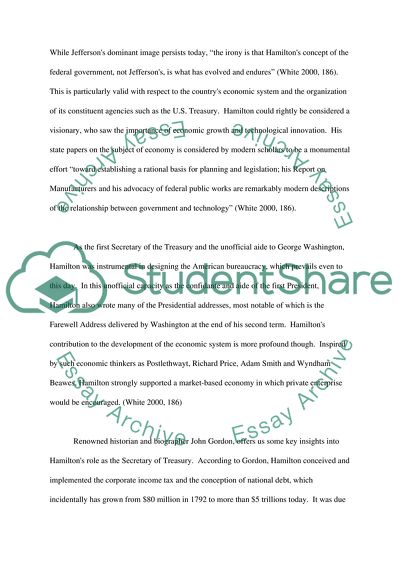Cite this document
(“Hamilton's Role as the Secretary of Treasury Research Paper”, n.d.)
Retrieved from https://studentshare.org/history/1569660-examine-alexander-hamiltons-role-in-establishing-the-us-treasury-and-laying-the-foundation-for-the-american-economic-system
Retrieved from https://studentshare.org/history/1569660-examine-alexander-hamiltons-role-in-establishing-the-us-treasury-and-laying-the-foundation-for-the-american-economic-system
(Hamilton'S Role As the Secretary of Treasury Research Paper)
https://studentshare.org/history/1569660-examine-alexander-hamiltons-role-in-establishing-the-us-treasury-and-laying-the-foundation-for-the-american-economic-system.
https://studentshare.org/history/1569660-examine-alexander-hamiltons-role-in-establishing-the-us-treasury-and-laying-the-foundation-for-the-american-economic-system.
“Hamilton'S Role As the Secretary of Treasury Research Paper”, n.d. https://studentshare.org/history/1569660-examine-alexander-hamiltons-role-in-establishing-the-us-treasury-and-laying-the-foundation-for-the-american-economic-system.


